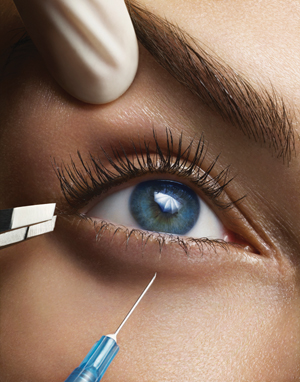Australians are continuing to spend up big on cosmetic procedures, with figures released this week by the Cosmetic Physicians Society of Australia (CPSA) revealing Australians spent an estimated $773.6 million on non- and minimally invasive treatments in the last twelve months,* a 20 per cent increase from 2011/2012.

Dermal filler injections, which can be used to add volume, sculpt and reshape the face, represent a large portion of this growth. The CPSA estimates a 25 per cent increase in spending on filler treatments over the past year. Similarly, the popularity of anti-wrinkle treatments, such as Botox and Dysport, continue to grow, with an estimated 15 per cent increase in spending these types of treatments since last year.
Results from a previous survey by the CPSA, also found that muscle relaxants and dermal fillers were the two most popular non-surgical cosmetic procedures undergone by survey respondents – 59.5 per cent of respondents admitted to having a muscle relaxant treatment, whilst 50.6 per cent said they’d had a procedure using a dermal filler.**
Dr Gabrielle Caswell, president of the CPSA, said the increase in procedures may be attributed to a number of factors including our shifting attitudes towards cosmetic medicine, more affordable procedures, more choice in treatment options, and an increase in awareness of premature skin ageing caused by sun damage.
“The growing acceptance of cosmetic medicine in Australia may be attributed to advances in cosmetic medicine and increased patient education about cosmetic treatments. Non-surgical cosmetic treatments are becoming more effective, less invasive and involve less ‘down time’ for patients. They’re often less expensive than surgery, making them more appealing and accessible to patients. Furthermore, many patients with sun damaged skin are now aware of medically proven treatments skin rejuvenation treatments to help reduce the signs of ageing caused by sun damage.”
Dr Caswell said that CPSA members had also witnessed a trend in patients now seeking longer lasting hyaluronic acid fillers, which can last for up to 24 months, which can be more cost-effective than short-term treatments.
“The popularity of longer lasting fillers is skyrocketing among people who are looking for a safe and medically proven skin-rejuvenation treatment. Typically, these patients have been treated with short-term fillers and have been pleased with the results and are then opting for hyaluronic acid preparations, which provide longer lasting results.
According to the CPSA, the most common non-surgical procedures requested by patients are anti-wrinkle treatments, dermal fillers, microdermabrasion, laser and IPL hair removal, and skin rejuvenation treatments, with men more likely to opt for anti-ageing treatments, treatments for hair loss and balding, and laser or IPL treatments for skin rejuvenation and hair removal.
“While cosmetic medicine is becoming more accessible and commonplace, people should seek treatment from a qualified doctor with appropriate training and experience. This will ensure patients are aware of all their treatment options and receive an individualised treatment plan suited to their needs,” added Dr Caswell.
Visit www.cosmeticphysicians.org.au for further information.
*Non-surgical cosmetic procedures do not usually break the skin and do not involve the use of either local or general anaesthetic, such as superficial chemical peels, microdermabrasion and laser hair removal.
**Based on a survey of 751 respondents conducted between March – April 2012, by the Cosmetic Physicians Society of Australasia (CPSA) in partnership with cosmetic medicine website Costhetics.

